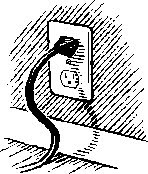My literary agent, Amanda Mecke, sent me an article with the same title as this blog post. The essence of it is the following quotations:
"While the United States is still debating whether to build a more efficient kind of coal-fired power plant that uses extremely hot steam, China has begun building such plants at a rate of one a month."
"With greater efficiency, a power plant burns less coal and emits less carbon dioxide for each unit of electricity it generates. Experts say the least efficient plants in China today convert 27 to 36 percent of the energy in coal into electricity. The most efficient plants achieve an efficiency as high as 44 percent, meaning they can cut global warming emissions by more than a third compared with the weakest plants."
What they are talking about is supercritical (extremely hot steam) coal fired plants and the quotations are true. I am currently, personally involved in financing two of these plants in the United States. The problem is twofold: (1) The Congress has put a moratorium on the financing of Coal Fired Plants by the Department of Agriculture's Rural Utility Service. This prevents Rural Ekectric Cooperatives in this country from accessing government loans to build these coal fired plants. That's why I am involved, providing private funds to finance what the government (led by Harry Waxman) will not. (2) Most of those in the government making these decisions do not know the difference between a conventional coal fired plant and a supercritical one.
The average coal unit in the U.S. has about a 33% efficiency. Increasing efficiencies to 44%, as the article states, would eliminate one third of all of the carbon dioxide emitted by the existing coal plant fleet.
That means we can have it all: Coal fired power plants with less pollutants across the board. All we need in our government is knowledge, reason, cooperation and less dogma from radical environmentalists. This can transition the U.S. over a reasonable period of time to non-polluting (or much less polluting) technologies.
Sunday, May 17, 2009
Saturday, May 9, 2009
NY Times: U.S. Drops Fuel Cell Research
"Developing those cells and coming up with a way to transport the hydrogen is a big challenge, Energy Secretary Steven Chu said in releasing energy-related details of the administration’s budget for the year beginning Oct. 1. Dr. Chu said the government preferred to focus on projects that would bear fruit more quickly."
The above quotation from the Times of May 7th demonstrates how misguided and disconnected bureaucrats and elected officials are from the real world of energy. Transporting hydrogen has never been a good idea. Why are they even thinking about it?
On March 9, 2009, only two months ago, the following news was released by the Department of Energy:
"Solid Oxide Fuel Cell Successfully Powers Truck Cab and Sleeper in DOE-Sponsored Test
DOE, Delphi, Peterbilt Join to Test Auxiliary Power Unit for Commercial Trucks"
The fuel cell was constructed by Delphi Corporation and ran on straight-from-the-pump diesel fuel. The release went on to say, "The unit is compact and can be configured to use natural gas, bio-diesel, propane, gasoline, coal-derived fuel, or military logistics fuel."
If Dr. Chu and our government would like to focus on projects that will bear fruit more quickly, they need to start paying attention to their own research apparatus at the DOE and the money tax payers are spending on this really outstanding research.
The current liquid fuels transportation infrastructure can support fuel cells run on methanol and diesel. This is the future of automotive propulsion.
The above quotation from the Times of May 7th demonstrates how misguided and disconnected bureaucrats and elected officials are from the real world of energy. Transporting hydrogen has never been a good idea. Why are they even thinking about it?
On March 9, 2009, only two months ago, the following news was released by the Department of Energy:
"Solid Oxide Fuel Cell Successfully Powers Truck Cab and Sleeper in DOE-Sponsored Test
DOE, Delphi, Peterbilt Join to Test Auxiliary Power Unit for Commercial Trucks"
The fuel cell was constructed by Delphi Corporation and ran on straight-from-the-pump diesel fuel. The release went on to say, "The unit is compact and can be configured to use natural gas, bio-diesel, propane, gasoline, coal-derived fuel, or military logistics fuel."
If Dr. Chu and our government would like to focus on projects that will bear fruit more quickly, they need to start paying attention to their own research apparatus at the DOE and the money tax payers are spending on this really outstanding research.
The current liquid fuels transportation infrastructure can support fuel cells run on methanol and diesel. This is the future of automotive propulsion.
Subscribe to:
Comments (Atom)



